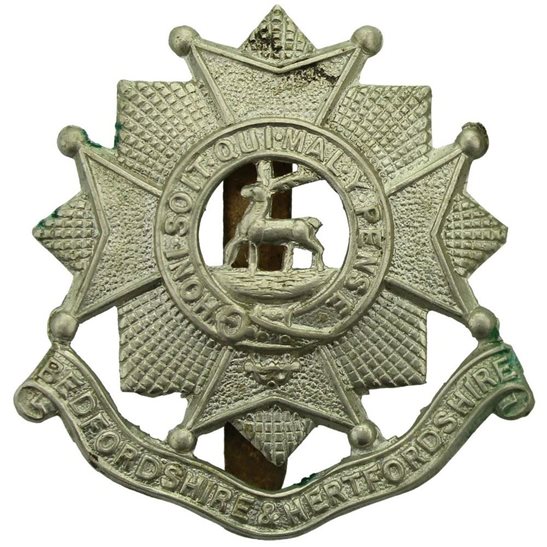Personal Details
Born: William was born on the 8 April 1890.
Family: The first son of William Morgan and Mary Ann Madeley of 14 Brownlow Street, Whitchurch, Shropshire. William married Gladys May Latham on the 6 December 1916 and together they had 2 children – John Oswald (born 26 October 1917) and Gladys (born 6 March 1919).
Civilian Occupation: In 1911 he was a barman at the Red Lion Hotel, Hall Street, Malpas, Cheshire. After the war he continued as a Licensed Victualler.
Residence: In 1939 he resided at 64 Salop Road, Wrexham, Wales.
Died: On 24 September 1953 aged 63.
Other Information: Brother of John Johnson Madeley.
Military Details
Regiment: 13th Battalion Bedfordshire & Hertfordshire Regiment (previously Household Battalion)
Rank: Sapper
Service Number: 60352 (previously 2312)
Date of Enlistment: 29 November 1916
Date of Discharge: 19 March 1919
Reason for Discharge: Demobilisation
Other Information: On the 15 December 1917 he was admitted to hospital with trench fever and remained there for 94 days. He was in hospital again on the 5 November 1918 with influenza.
William was awarded the Campaign Medals (British War Medal, and Victory Medal).

The British War Medal (also known as 'Squeak') was a silver or bronze medal awarded to officers and men of the British and Imperial Forces who either entered a theatre of war or entered service overseas between 5th August 1914 and 11th November 1918 inclusive. This was later extended to services in Russia, Siberia and some other areas in 1919 and 1920. Approximately 6.5 million British War Medals were issued. Approximately 6.4 million of these were the silver versions of this medal. Around 110,000 of a bronze version were issued mainly to Chinese, Maltese and Indian Labour Corps. The front (obv or obverse) of the medal depicts the head of George V. The recipient's service number, rank, name and unit was impressed on the rim.
The Allied Victory Medal (also known as 'Wilfred') was issued by each of the allies. It was decided that each of the allies should each issue their own bronze victory medal with a similar design, similar equivalent wording and identical ribbon. The British medal was designed by W. McMillan. The front depicts a winged classical figure representing victory. Approximately 5.7 million victory medals were issued. Interestingly, eligibility for this medal was more restrictive and not everyone who received the British War Medal ('Squeak') also received the Victory Medal ('Wilfred'). However, in general, all recipients of 'Wilfred' also received 'Squeak' and all recipients of The 1914 Star or The 1914/1915 Star (also known as 'Pip') also received both 'Squeak' and 'Wilfred'. The recipient's service number, rank, name and unit was impressed on the rim.

